Time to replace that boring patch of lawn with a bright and beautiful flower garden! Let's talk about how to start your first flower garden from scratch. We're going to start small with some expert flower design tips to consider—plus advice for choosing, planting, and growing your flowers.
Advertisement
We all dream of a lush, lovely flower bed full of colorful blooms all season long. What we end up with is usually a different story. Does your color run out when the heat hits? Do the plants clash and give the impression of clown pants? Do the tall plants crowd out the short ones? Is it all looking shabby by late summer?
Let's review how to start your flower garden from scratch to understand the important considerations along the way.
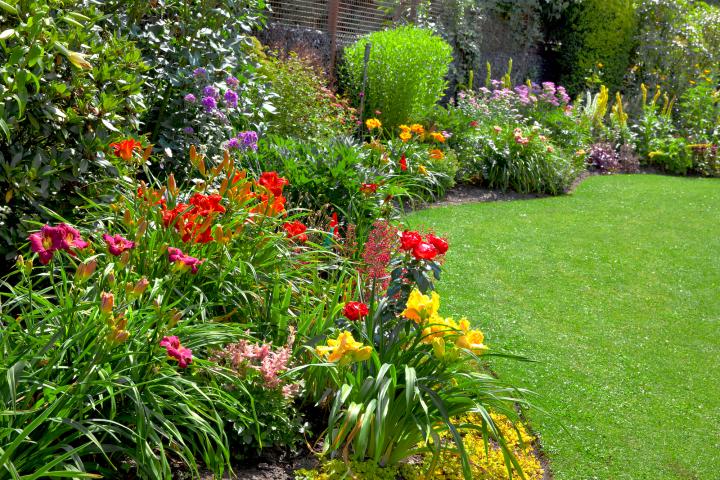
Colorful, perennial flower border. Image: Artens/Shutterstock
Picking the Perfect Location
Be sure to locate your flower garden where you can enjoy it every day. Take time to assess your site. Here's a short list to go through:
- How much sun does your garden get? Many people are surprised that they've made some wrong assumptions. Over a single typical day, write down the amount of sunlight your garden receives every hour from early in the morning to sunset. Is it full sun (6 hours or more), partial sun (3 to 6 hours), partial shade (about 3 hours), or full shade (less then 3 hours)? If you find your plant leaves burn or growth becomes leggy, those are hints that the plants are placed in the wrong location.
- What is the soil like? You simply need healthy soil that's not compacted and that drains well. A couple clues: After it rains, the water shouldn't pool in the garden area. Also, it shouldn't be difficult to dig into the soil to amend with organic matter such as compost to provide nutrients and improve soil structure. Learn how to garden in compacted clay soil.
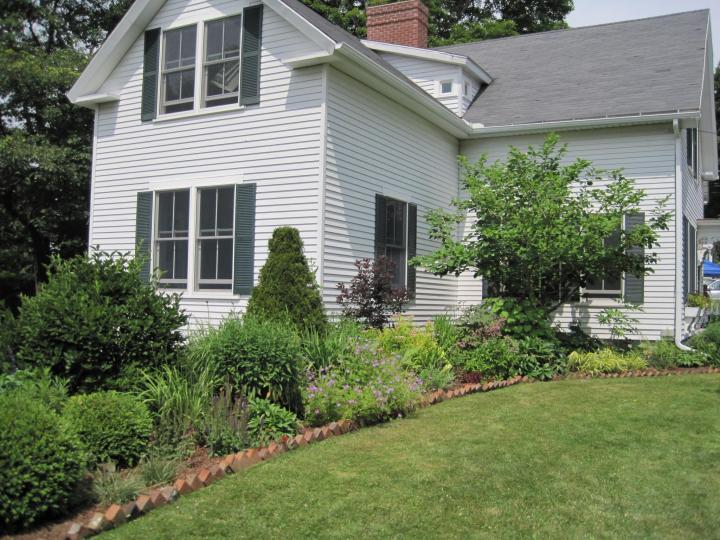
Once you know what you are dealing with, you can select plants that will do well on your site. Think of your garden as a multi-layered community of plants. When you buy a plant, you'll see that the tags will tell you how much sun exposure they need. Other things to consider about your gardening site include:
- Does your hose reach that far? Having an accessible water source will be important, especially when the heat of mid-summer kicks in.
- Also consider what function—other than looking gorgeous—you'd like it to perform. Screening an ugly view? Adding privacy or a place to sit? Do you want to see it from inside the house? Make a welcoming front walkway? Surround a deck or patio? Will it be a border garden on the edge of the lawn or an island of color in the middle?
How much work do you want to do and how much time do you have to spend caring for your new garden? Be realistic. It is best to start small. You can always enlarge your garden over time.
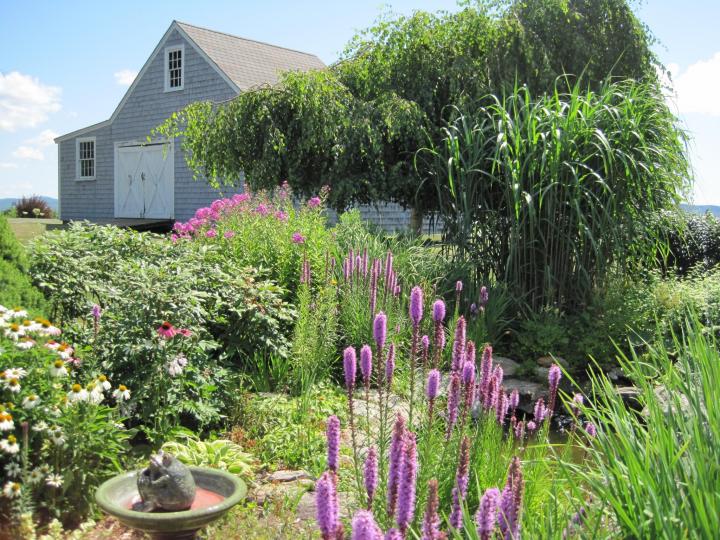
Small trees, ornamental grasses, and even a pond can be included in your design if you have enough room.
Prep Work for Flower Garden
- Before you start digging, make sure to check for buried utility lines by calling Dig-Safe at 811.
- Lay out the location of your garden with a garden hose or rope. Make sure the curves aren't too sharp so you can still mow around it easily. Once you get a shape you like, mark the outline with lime or powdered chalk. Use an edger or flat spade to cut along the edge.
- There are many ways to attack your grass. You can dig it up by hand, till the grass in if it isn't weedy, remove the sod completely, or smother it. Personally I prefer smothering to digging. Using the lasagna method, cover the area with a thick layer of newspaper or cardboard, wet that down and cover it with several layers of any organic mulch materials you can find such as shredded leaves, coffee grounds, grass clippings, manure, compost, top soil, rotten sawdust, and seed-free straw. It will take a while, but eventually the grass will die off. You don't have to wait though—you can dig planting holes directly through the mulch into the ground and start planting as soon as you like.
- Avoid digging or handling soil when it's wet in order to prevent compaction. If you squeeze the soil into a ball and it doesn't crumble or fall apart, it's too wet to plant.
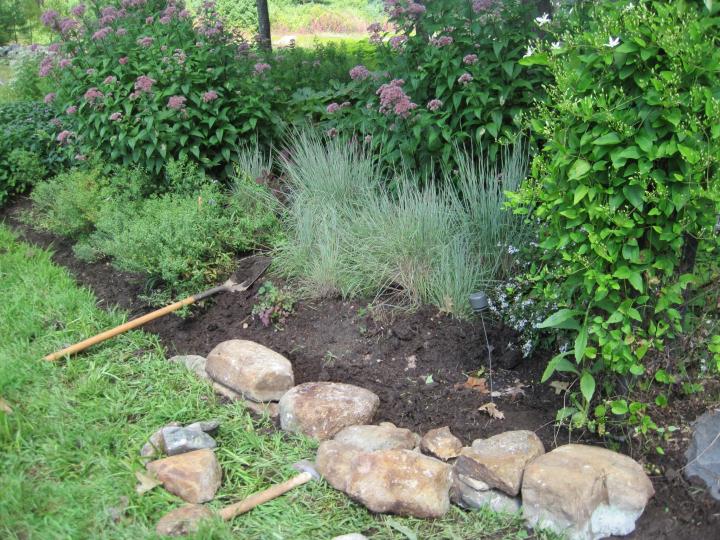
Gardens change over time. Don't be afraid to dig in and add something new!
Choosing Flowers
This is the fun part! Use plants that you love, whether it's the color, size, shape, or fragrance that attracts you. Group them by their sun and water requirements. Pay attention to foliage. It will persist long after perennial flowers have faded.
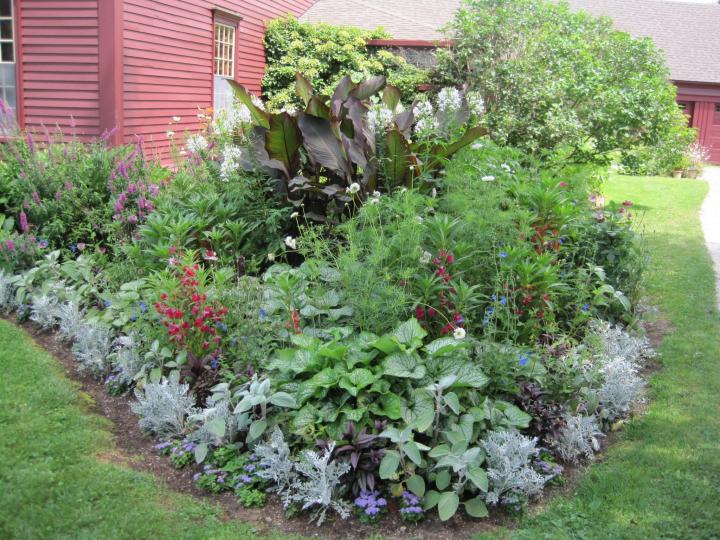
Multiple foliage textures, sizes, and colors make this bed attractive all season long even without flowers.
A combination of bulbs, perennials, annuals, and shrubs will offer four-season interest.
Plan for season-long color by mixing annuals with perennials.
- What are perennial flowers? These flowers which come back year after year form the backbone of the garden. Yu only have to plant them once! By staggering the bloom times you can have color all season long.
Once a perennial is done blossoming, it still needs to look good; plants with interesting foliage colors or textures will continue to add something to your garden even when not in bloom.
Perennial flower choices: Consider some of these tried and true perennials: phlox, foxglove, daisies, cranesbill geraniums, reblooming daylilies, yarrow, coreopsis, sedum, heuchera, ladies' mantle, and rudbeckias.
See our full library of individual Flower Growing Guides.
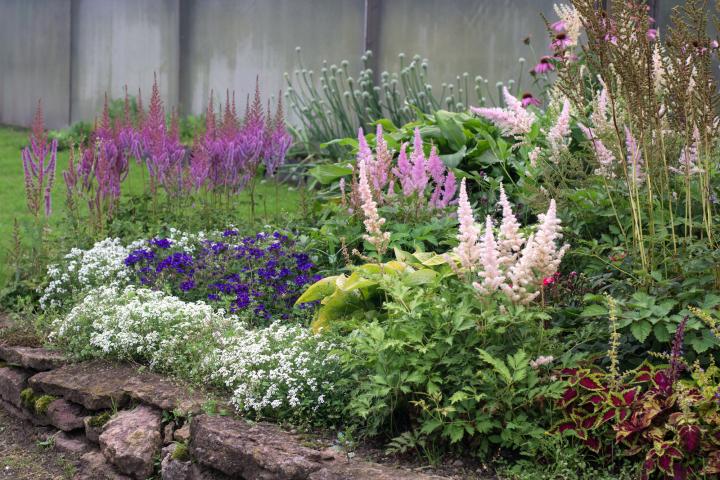
Perennial plants with interesting flower and foliage colors or textures. Credit: L. Sergei/Shutterstock
- What are annual flowers? These are the one-year wonders which add quick blooms and instant pops of color. Annuals are also great for bridging the gaps in the perennial garden.
They will give you season-long color if kept deadheaded. Since they are not permanent additions to the garden, you can change them every year, giving your garden a new look.
Annual flower choices: Here are some annuals that I can't do without: cleome, verbena bonariensis, browallia, impatiens, zinnia 'Profusion', dahlias, calendula, cosmos, and nasturtiums.
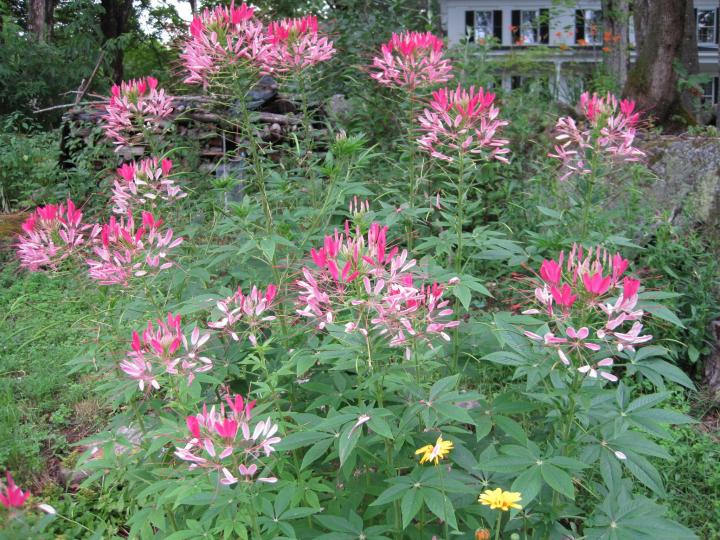
Cleomes, also called spider flower, is a tall annual which makes a pretty backdrop with its delicate fern-like leaves.
- Don't forget spring bulbs! In the fall, plant spring-blooming bulbs which will kick things off in early spring. Snowdrops, tulips, daffodils, and crocus get the party started!
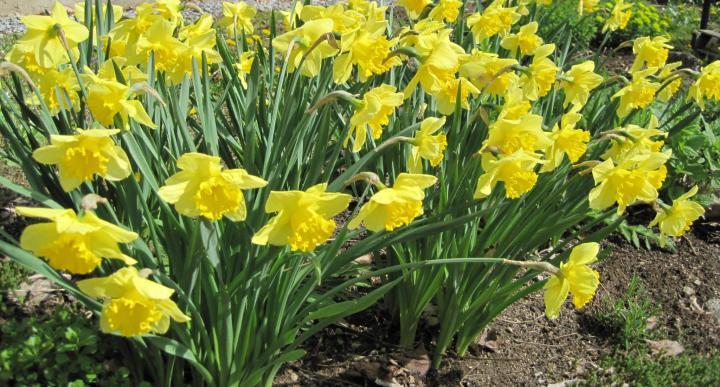
Daffodils are a popular spring bulb because they are critter-resistant (unlike some tulips) and return year after year.
Shrubs for Structure
Add flowering shrubs to add another layer to your design. You can't go wrong with easy repeat-blooming rose shrubs.
Shrubs also provide structure and four-season interest. In the frosty north, our gardens are covered by snow for months. Dwarf conifers, hedges, broadleaf evergreens, and shrubs with colorful bark or twisty shapes add winter interest.
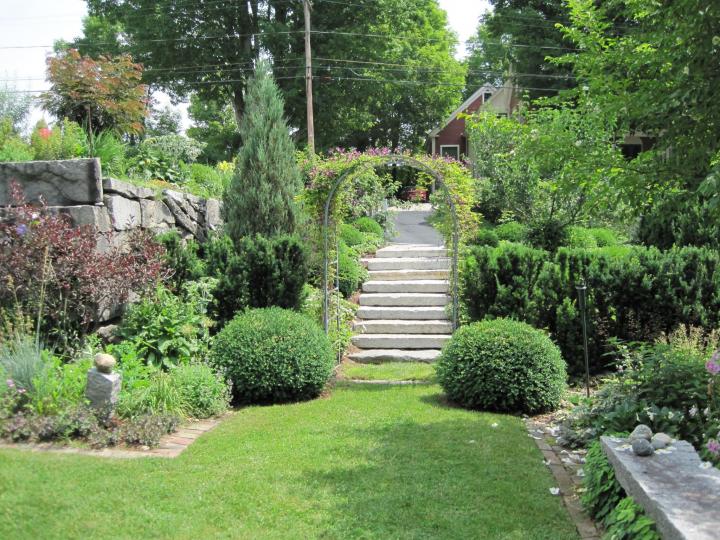
Shrubs that also offer fruit and fall color are welcome additions, too.
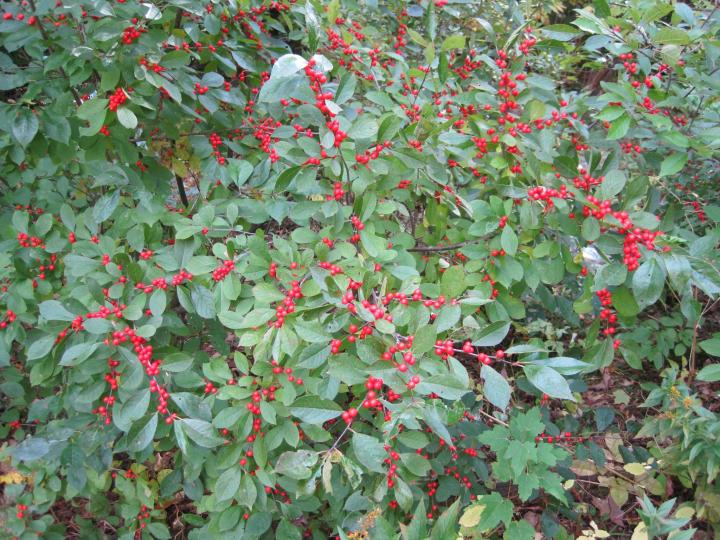
Design a Living Tapestry
Now let's think about what makes a good flower garden design.
- Mixing heights, colors, and textures will give you a much more appealing landscape than regimented rows.
- Make borders deep to hold more plants.
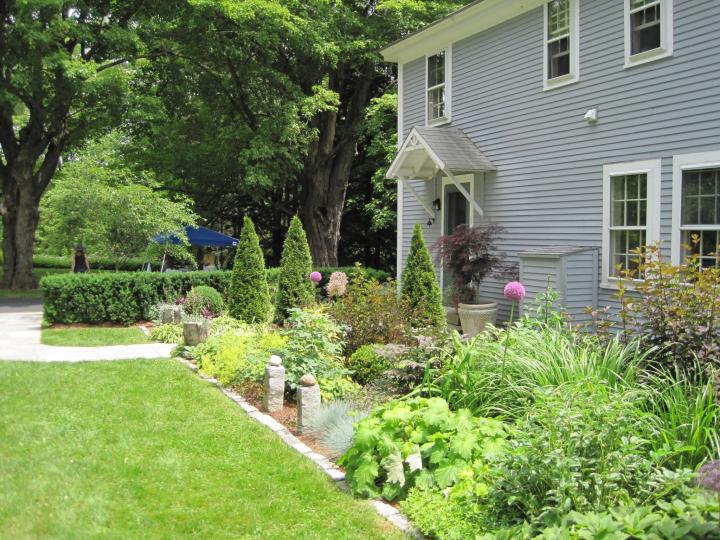
This entry garden is deep enough to hold many large perennial plants.
- Repeating plants, shapes, and colors throughout the garden give it continuity. A general rule is to plant in groups of three.
- Pay attention to heights. Even in a small garden there is room for short, medium, and tall plants. However, you don't have to stick strictly with tall plants in the back and short ones in the front. Let a few of the taller ones advance to the middle to vary the look.
- When planning an island remember to make it visible from all sides.
- Leave enough room around your perennials for future growth. You can always plant annuals to fill up the extra space. They offer the chance to try out different color combinations and if you don't like the look, you can easily change it next year!
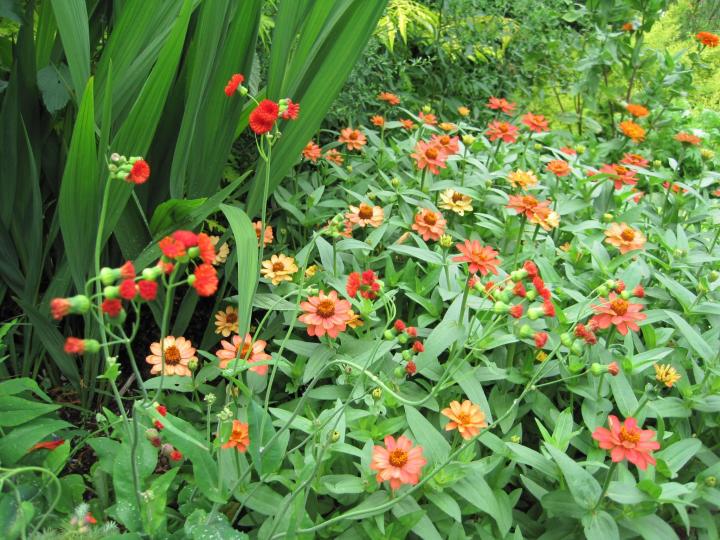
Shades of a color repeated throughout the garden using different plants lends a cohesive look to the design.
Flower Bed Designs
Need inspiration? Check out these free flower bed designs designed by Almanac editors as well as readers:
Establish an Ecosystem
If you plant it, they will come. Birds will visit fruiting trees and shrubs and dine on seeds and berries. Plan to have some evergreens that offer shelter and nesting sites.
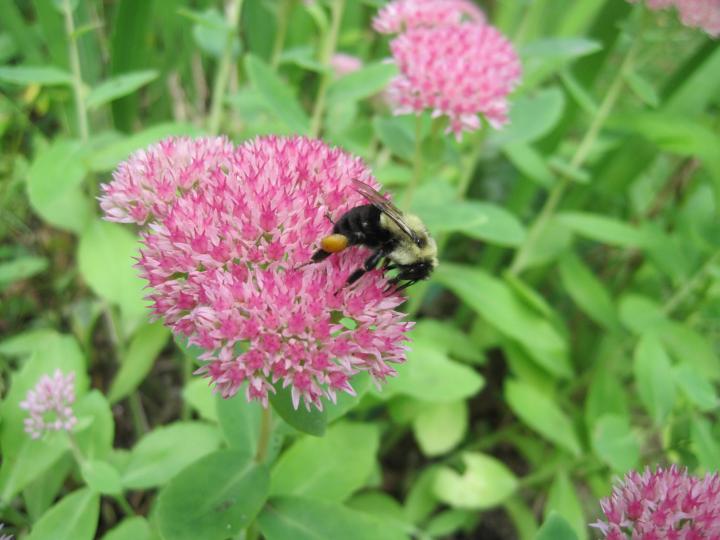
Try to have something in bloom from early spring through fall to keep bees and other pollinators well fed.
When choosing plants, remember to "bee" kind to your native pollinators. Look for native perennials if you want to make your garden a bee-, butterfly-, and hummingbird-friendly habitat. Fancy hybrids look lovely, but many may no longer produce the amounts of pollen and nectar needed to sustain pollinators.
Also go for native if you want low-maintenance, hardiness, and fewer pest and disease problems. Once established, they will need less watering and pampering than exotic plants.
Some of my favorite natives are: agastache, columbine, bee balm, coneflowers, asters, and asclepias. For more ideas, see the Almanac's native plant list.
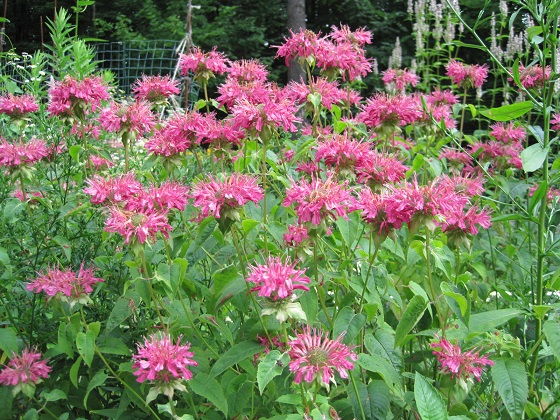
Bee balm is a native American plant and a pollinator favorite!
Plant in drifts or blocks so that bees can find your flowers. In searching for food, many kinds of bees collect from a single type of plant on each foray, like all daisies one time and all borage another time. Scientists call this "flower constancy." To make foraging less work, plant masses of 5 to 7 plants of the same species together rather than scattering them around the garden singly. This also reduces the disorganized "clown pants" look.
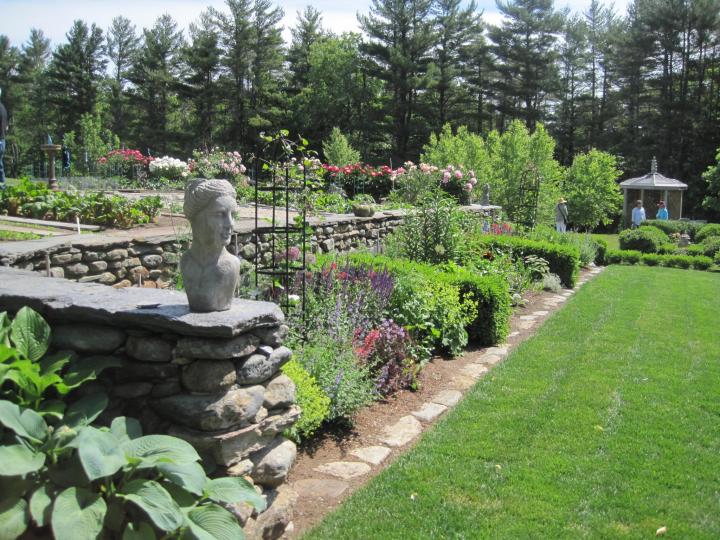
Stone or other type of edging helps define the edge of the garden and keeps grass from encroaching into the planting bed.
Attention to maintenance will keep your garden looking fresh.
Tips on Planting Your Flower Garden
Tailor your garden to make it uniquely your own and enjoy your work of art! Even if space is at a premium in your yard, creativity is boundless!
Online Garden Planning
Ready to plan your flower garden? Our Garden Planner now includes flowers, too!! Play around on your computer. We’re offering a free 7-day trial of the garden planner—ample time to plan a garden.

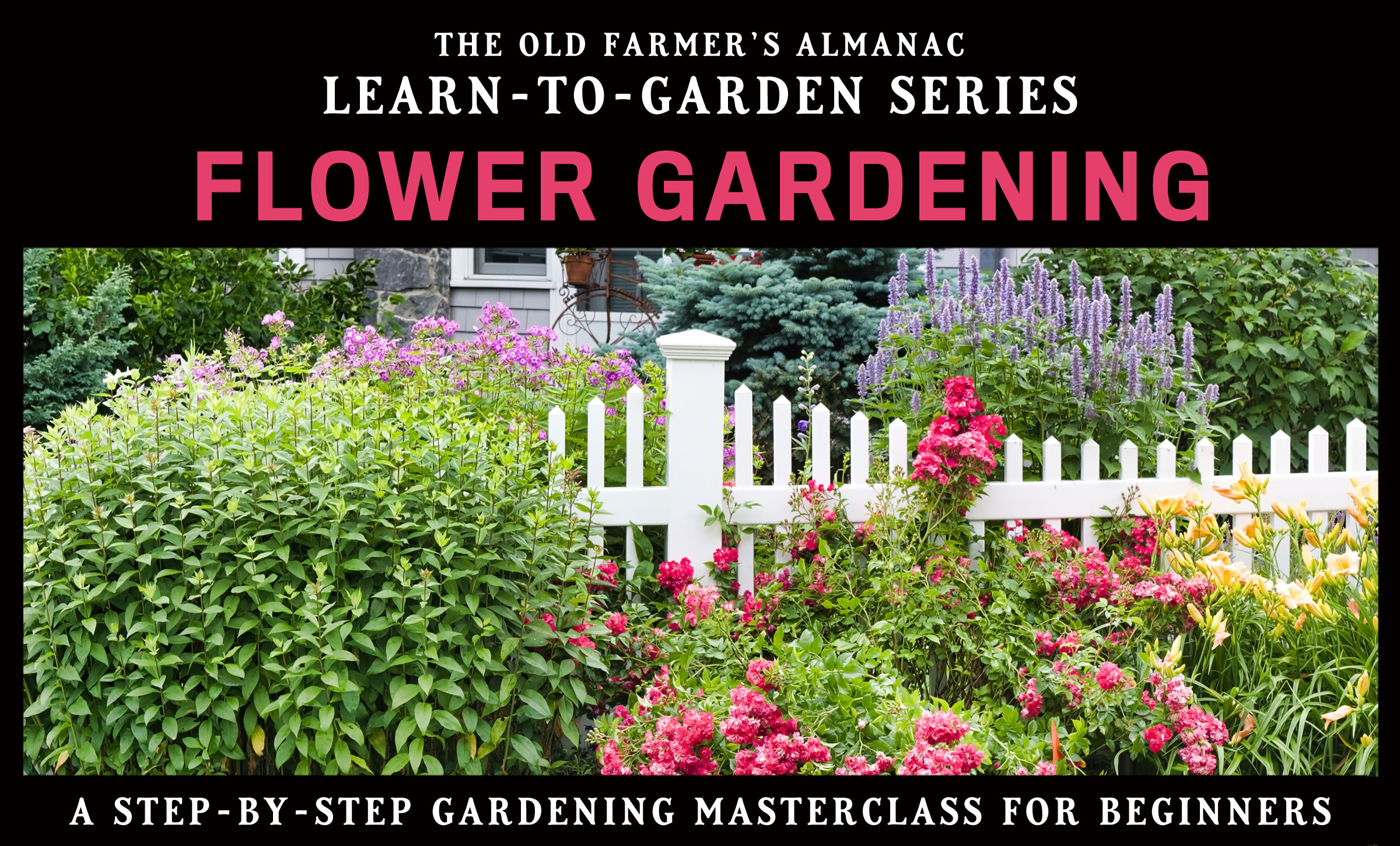
























Comments